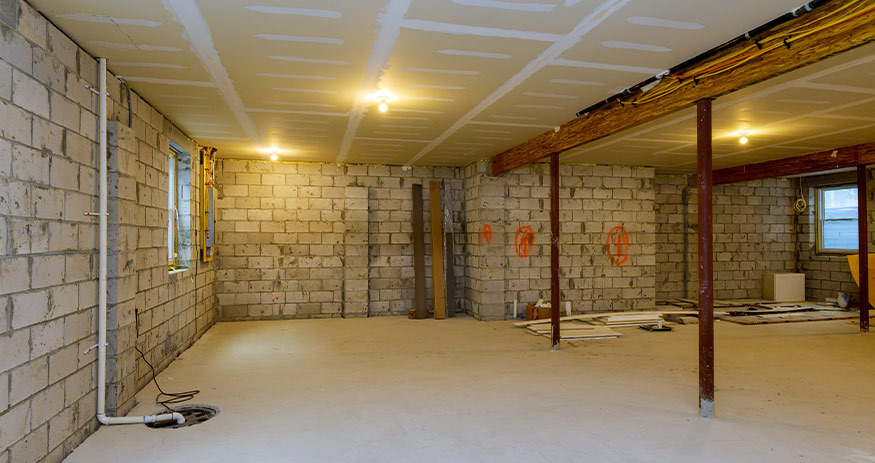
If you’re planning to upgrade your basement—either to gain more space or reinforce your home’s structural integrity—you’ve likely come across two main options: underpinning and benching. Both methods aim to increase basement height and improve support, but they use very different approaches.
In this article, we’ll explore the key differences between underpinning and benching, and help you decide which method is best suited for your home.
Underpinning is a structural reinforcement technique that strengthens and deepens your home’s foundation. It involves excavating beneath the existing foundation and pouring new concrete to increase its depth and load-bearing capacity.
Homeowners typically choose underpinning when:
Benching is an alternative to underpinning that also increases basement height but does so without extending the foundation deeper. Instead, it involves excavating soil inside the basement and constructing a concrete “bench” or ledge around the perimeter to support the existing foundation.
This method is less invasive than underpinning, making it suitable for certain use cases.
| Factor | Underpinning | Benching |
| Structural Issues | Ideal for solving foundation settling or cracks | Not suitable for structural repairs |
| Basement Height | Excellent for significant height increase | Good for moderate headroom gain |
| Cost | Higher due to depth and complexity | More budget-friendly |
| Timeline | Takes longer due to deep excavation | Completed faster with less disruption |
| Space Efficiency | Maximizes usable basement space | Takes up some floor space with the concrete ledge |
| Long-term Support | Offers lasting stability and protection | Offers minimal structural improvement |
Choose underpinning if:
Go with benching if:
Benching is a practical, cost-effective option for homeowners looking to make their basement more livable without intensive structural changes.
Underpinning deepens and strengthens the existing foundation, while benching involves excavating inside the basement and supporting the existing foundation with concrete ledges.
Yes. Benching is usually less expensive due to its shallower excavation and simpler process.
Underpinning can take several weeks depending on the project scope, while benching can often be completed more quickly.
If you need more height and structural support, choose underpinning. If you just want extra space without altering the foundation’s depth, benching is a faster and more economical choice.
Choosing between underpinning and benching depends on your foundation’s condition, space goals, and budget. At Rock Bottom Underpinning, we specialize in both methods and can assess your home to determine the most effective solution.
Get in touch today for a free consultation—trust the experts in basement underpinning and foundation solutions.